Medication Guide Distribution Requirements Checker
Medication Guide Checker
Answer the questions below to determine if a Medication Guide is required for this prescription.
When you pick up a prescription, you might get a small printed sheet along with your pills. That’s not just a flyer-it’s a Medication Guide, a legally required document from the FDA that explains serious risks tied to certain drugs. For pharmacists and providers, knowing when and how to hand out these guides isn’t optional. It’s the law. And getting it wrong can put patients at risk-and expose you to regulatory trouble.
What Exactly Is a Medication Guide?
A Medication Guide (MG) is a paper or electronic document approved by the FDA that explains serious safety risks of specific prescription drugs in plain language. Unlike general patient info sheets or drug package inserts meant for doctors, Medication Guides are written for patients. They focus on what you need to know to avoid harm: possible side effects, when to call your doctor, what not to mix with the drug, and why following instructions matters. The FDA only requires these guides for drugs with high-risk profiles. That means drugs that can cause life-threatening reactions, have risks that outweigh benefits for some people, or need exact dosing to work. Examples include isotretinoin (for severe acne), clozapine (for schizophrenia), and hormone therapies like estrogen. Right now, over 200 prescription drugs fall into this category. These guides aren’t suggestions. They’re legally binding under 21 CFR 208, part of the Food and Drug Administration Modernization Act of 1997. If your drug needs one, you must distribute it every time the rules say so.When Do You Have to Hand Out a Medication Guide?
This is where things get tricky. You don’t hand out a Medication Guide every time you fill a prescription. The FDA spells out five clear situations when it’s required:- The patient or their caregiver asks for it.
- The drug is dispensed in an outpatient setting (like a pharmacy or clinic) for the patient to take at home.
- This is the first time a healthcare provider gives the drug to a patient in an outpatient clinic, infusion center, or dialysis unit.
- The Medication Guide has been updated with new safety info.
- The drug is part of a REMS (Risk Evaluation and Mitigation Strategy) program that specifically requires it.
Medication Guide vs. Other Patient Info
Not all patient handouts are the same. Confusing them is a common mistake. - Medication Guides are FDA-approved, drug-specific, and mandatory. They go through formal review and must meet readability standards. - Patient Medication Information (PMI) or Consumer Medication Information (CMI) are voluntary. Pharmacies create these themselves, often using templates from drug manufacturers or third-party vendors. They’re helpful, but not legally required. - Package inserts are for healthcare professionals. They’re dense, technical, and full of clinical data. Patients can’t understand them. - REMS documents are broader safety programs. Some REMS include Medication Guides as part of their requirements. For example, the iPLEDGE program for isotretinoin forces providers to review the guide with patients before prescribing. So in that case, the guide isn’t just required-it’s part of a legal safety protocol. Knowing the difference keeps you compliant and prevents over-distribution, which wastes time and resources.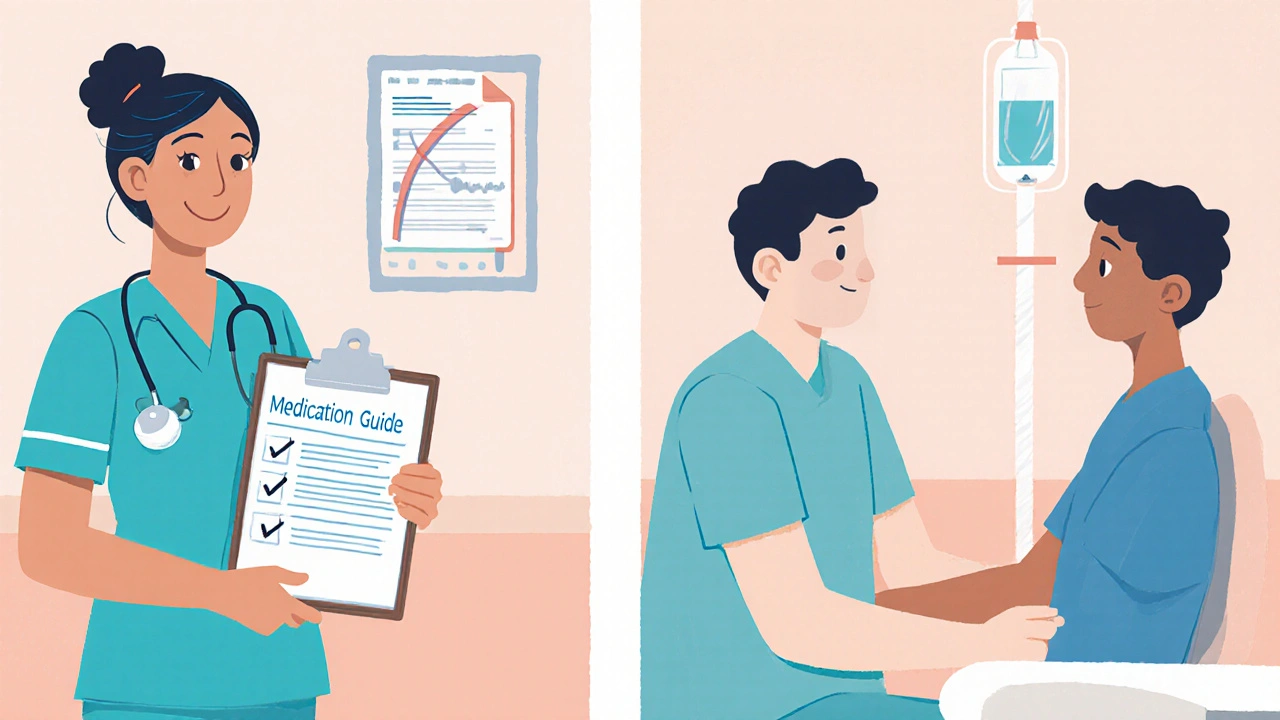
Why Distribution Rules Vary by Setting
The FDA’s rules aren’t random. They’re based on how and where the drug is used. In a pharmacy, the patient takes the drug home alone. They might forget instructions. They might not understand side effects. That’s why the guide must be given every time. In an infusion clinic, the patient is under direct supervision. Nurses monitor for reactions. They can answer questions on the spot. The first time they get the drug, they get the guide. After that, the risk of misunderstanding drops because they’ve already been educated. But here’s the problem: many pharmacists don’t know this. A 2022 survey of 1,247 hospital pharmacists found that 68% were unsure when to distribute guides in outpatient clinics. Over 40% admitted they sometimes gave out guides unnecessarily just to be safe. That’s not just inefficient-it’s misleading. If patients get too many guides, they start ignoring them. The whole point is to make critical info stand out.Real-World Challenges Pharmacists Face
Practical issues come up every day. - Tracking updates: When the FDA approves a new version of a Medication Guide, manufacturers must notify pharmacies. But delays happen. If you’re still handing out an old guide after a safety update, you’re not compliant. - Electronic delivery: The FDA allows patients to request electronic copies. But you still must offer the paper version. Many pharmacies still don’t have systems to track digital requests. - REMS confusion: Some REMS programs have extra steps. If a drug is under iPLEDGE or another REMS, you need to document that the patient received and understood the guide. That adds paperwork. - Staff turnover: New hires often don’t know the rules. One pharmacy in Colorado reported a 30% error rate in guide distribution after hiring three new pharmacists in a month. Leading institutions have solved these problems. The University of California San Francisco Medical Center cut distribution errors by 73% by adding barcode scanning to their pharmacy system. When a drug requiring a guide is scanned, the system pops up a reminder and logs distribution. Simple. Effective.
What’s Changing in 2025?
The FDA is reviewing the entire Medication Guide program. A congressionally mandated study is due by the end of 2024, and early signs point to changes. - The FDA proposed new rules in May 2023 to expand electronic distribution options. Patients will still get paper copies if they want them, but digital access will be easier. - A draft guidance from January 2023 wants to standardize guide formats to improve readability. Right now, some guides are too long or use confusing language. A 2022 study found only 37% of patients could recall key safety info a week after reading one. - Industry analysts predict a 22% increase in drugs requiring guides over the next five years, mostly from new cancer and rare disease treatments. The goal? Make these guides actually useful-not just paperwork.What You Need to Do Now
If you’re a pharmacist or provider, here’s your action plan:- Know which drugs in your inventory require Medication Guides. Check the FDA’s list regularly.
- Create a clear policy for your setting: pharmacy, clinic, or infusion center. Know when to hand them out and when not to.
- Train your team. Use real examples. Don’t assume they know the rules.
- Use technology. Barcode systems, EHR alerts, and pharmacy software can automate reminders and logging.
- Offer paper AND electronic options. Ask patients their preference.
- Track guide updates. Subscribe to FDA notifications or use a reliable drug information service.
Why This Matters Beyond Compliance
Medication Guides aren’t just about avoiding fines. They’re about saving lives. A patient on clozapine might not realize they need weekly blood tests. Someone on estrogen might not know the risk of blood clots. A parent giving isotretinoin to their teen might not understand the birth control requirements. When you hand out a guide correctly, you’re not just following rules. You’re giving someone the power to protect themselves. As Dr. Janet Woodcock, former FDA drug chief, said: “Medication Guides are essential tools that help patients understand the serious risks associated with certain medications and how to use them safely.” That’s why this isn’t just a pharmacy task. It’s a patient safety mission.Do I need to give a Medication Guide every time I refill a prescription?
Only if the drug is dispensed directly to the patient for self-administration in an outpatient setting. For example, if you’re filling isotretinoin or clozapine, yes-every refill. But if the drug is given in a clinic (like an infusion), you only give the guide the first time the patient receives it, unless the guide has been updated.
Can I email or text the Medication Guide instead of printing it?
Yes, but only if the patient asks for it. You must still offer the paper version. The FDA allows electronic delivery as an alternative, not a replacement. You can’t assume patients want it digitally. Always confirm their preference.
Are Medication Guides required in hospitals?
No. Medication Guides are not required in inpatient settings like hospitals or nursing homes. However, healthcare providers must still educate patients about serious risks and how to use the drug safely. Verbal counseling and written materials are required, but not the official FDA Medication Guide.
What happens if I forget to give a Medication Guide?
You could face regulatory action from the FDA, especially if a patient is harmed and it’s found you didn’t comply. While enforcement varies, repeated failures or negligence can lead to citations, fines, or loss of licensure. More importantly, you’ve failed your patient’s safety.
How do I know if a Medication Guide has been updated?
Manufacturers are required to notify pharmacies of updates, but delays happen. Subscribe to FDA Drug Safety Communications, use a trusted drug information service like Micromedex or Lexicomp, or check the FDA’s website directly. Update your inventory as soon as you get the new version.
Are Medication Guides the same as REMS?
No. A Medication Guide is one component that may be part of a REMS (Risk Evaluation and Mitigation Strategy). REMS are broader safety programs that can include training, restricted distribution, or monitoring. Some drugs, like isotretinoin, require both a REMS and a Medication Guide. Always check if the drug has a REMS and what it requires.
Why do some drugs have Medication Guides and others don’t?
The FDA only requires them for drugs that meet three criteria: they can cause serious harm, their risks outweigh benefits for some people, or patient adherence is critical to safety. Only about 15% of prescription drugs in the U.S. meet these standards. Most common drugs like antibiotics or blood pressure meds don’t need them because their risks are well-known and manageable.

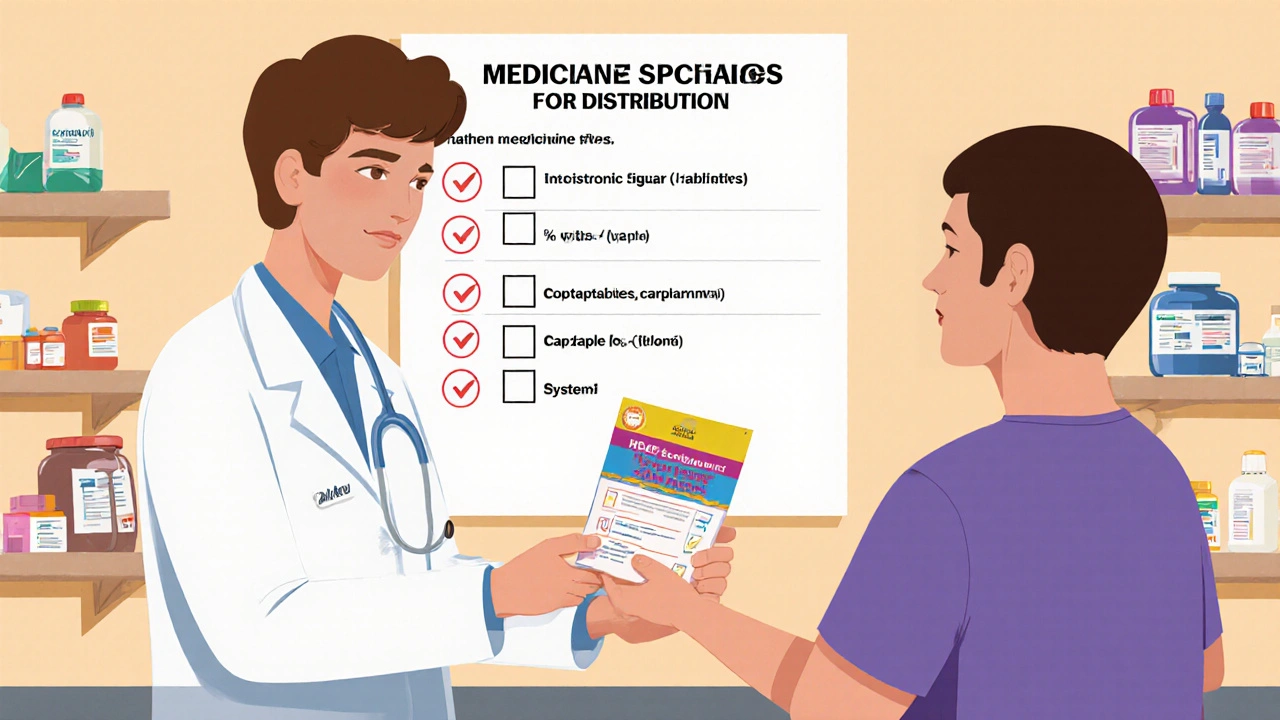

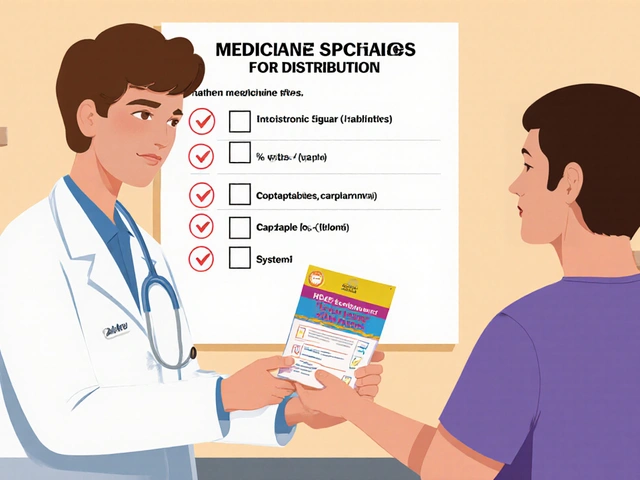

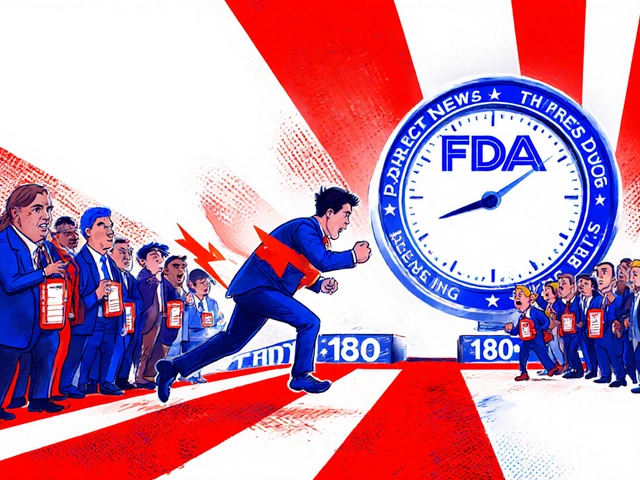
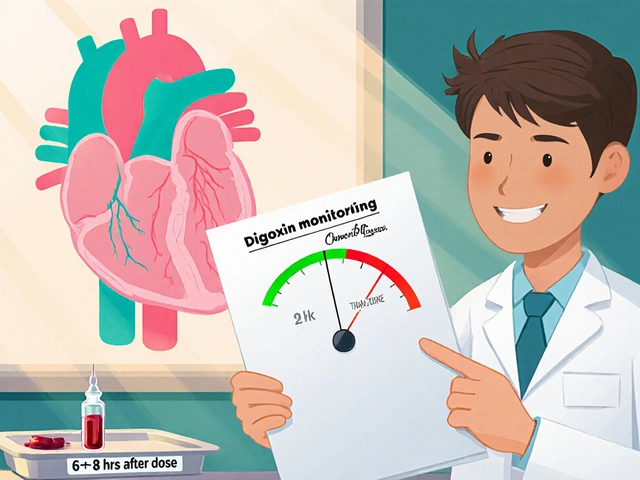
Gabe Solack
November 18, 2025 AT 18:01 PMI've been handing out these guides like candy until I realized half my patients just toss 'em in the bag. Now I ask if they want paper or email - 80% say email. Saves paper, less clutter, and they actually read it. 📱✨
Yash Nair
November 18, 2025 AT 21:45 PMwhy the fck do we even need this? in india we just tell patients what to do and they listen. this america bureaucracy is insane. who reads these papers anyway? #makepharmacygreatagain
Bailey Sheppard
November 20, 2025 AT 16:41 PMThis is actually one of those quiet wins in healthcare. Not flashy, not viral, but if you get this right, someone doesn't end up in the ER because they didn't know estrogen = blood clot risk. Simple, human, important.
Love that UCSF nailed it with barcode scans. Tech that serves people, not the other way around.
Girish Pai
November 22, 2025 AT 10:58 AMThe REMS-MG nexus represents a critical compliance architecture in pharmacovigilance ecosystems. Non-adherence to 21 CFR 208 triggers regulatory exposure vectors, especially in ambulatory care settings where risk stratification is non-linear. Bottom line: if it's on the FDA's list, you're legally obligated to distribute - period.
Kristi Joy
November 23, 2025 AT 12:18 PMTo the new grads reading this: don't panic. You don't need to memorize all 200+ drugs. Just make a cheat sheet for your top 10 most prescribed ones. Keep it on your desk. Ask for help. We've all been there. You're doing better than you think.
And yes - offering the electronic option? That’s kindness. That’s patient-centered care.
Hal Nicholas
November 23, 2025 AT 16:37 PMI’ve seen this happen. Patient gets isotretinoin, no guide, gets pregnant, lawsuit follows. Then the pharmacy gets audited. Then the pharmacist gets fired. Then the whole team gets retrained. All because someone was ‘too busy’ to print one sheet.
It’s not about paperwork. It’s about not being the reason someone’s life gets ruined.
Louie Amour
November 25, 2025 AT 04:06 AMHonestly? Most of these guides are written by lawyers who’ve never met a patient. They’re 12 pages long, 8-point font, full of ‘may cause’ and ‘potential risk.’ Who reads this? No one. It’s performative compliance. The FDA should just make doctors explain it verbally - faster, cheaper, more effective.
Kristina Williams
November 25, 2025 AT 07:14 AMWait… so you’re telling me the government is forcing pharmacies to hand out these guides… but NOT in hospitals? That’s a trap. Big Pharma owns the FDA. They want you to think you’re safe in hospitals so they can skip the paperwork. But the drugs are the same! They’re lying to you. Wake up.
Shilpi Tiwari
November 26, 2025 AT 12:04 PMInteresting that the FDA is pushing digital delivery - but only if requested. That’s a classic opt-in bias. Most patients won’t ask, so they’ll keep getting paper. The real win would be default digital + paper on request. Also, the readability stats are terrifying. 37% recall? That’s worse than a pop quiz after a nap.
Christine Eslinger
November 28, 2025 AT 07:40 AMThere’s a deeper truth here: we treat compliance like a checklist, but patient safety is a relationship. The guide isn’t the solution - it’s the starting point. The real work is in the pause after handing it over. The look in their eyes. The question they’re too scared to ask. That’s where healing happens.
Maybe the next step isn’t more guides… but more time.